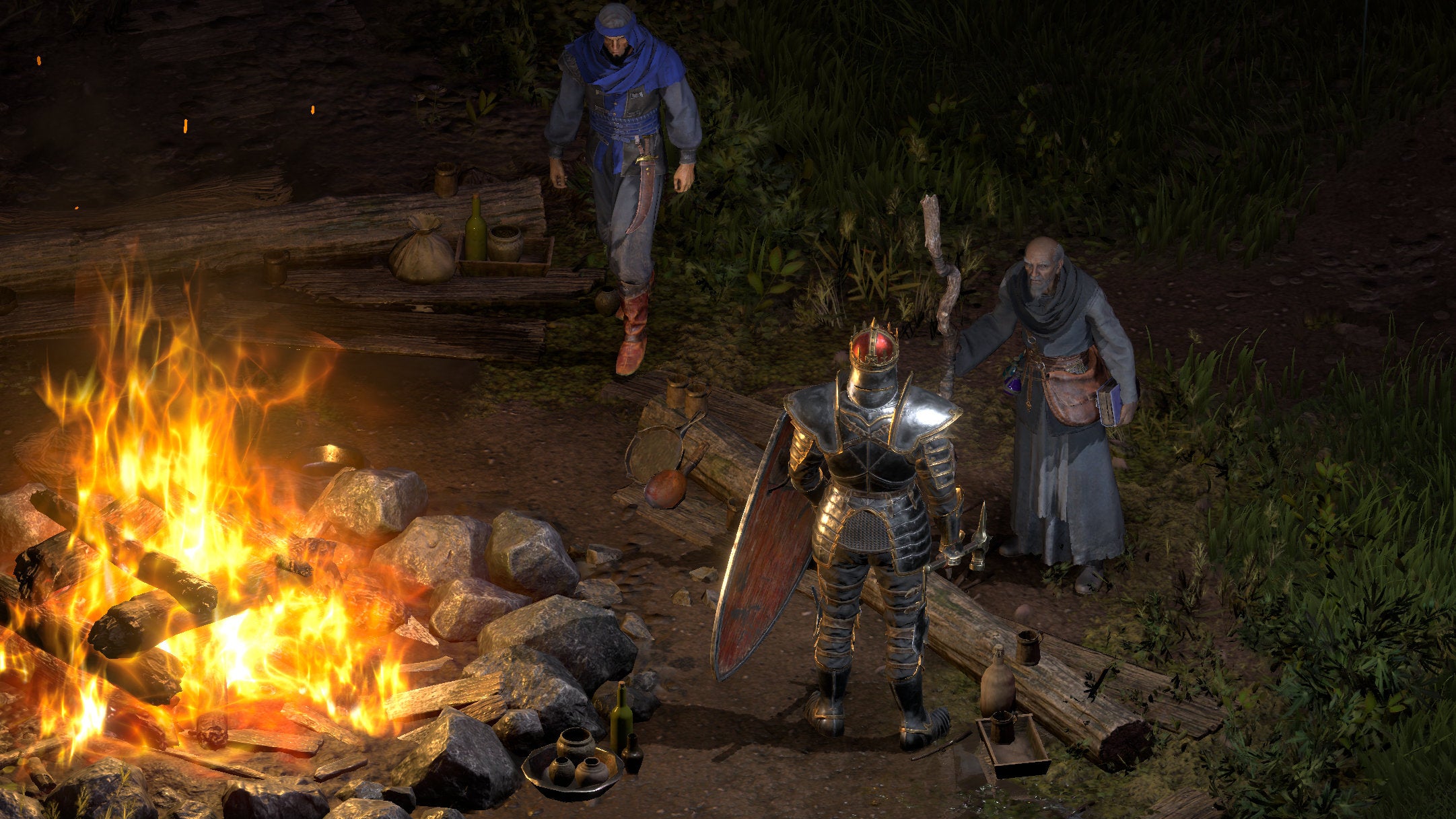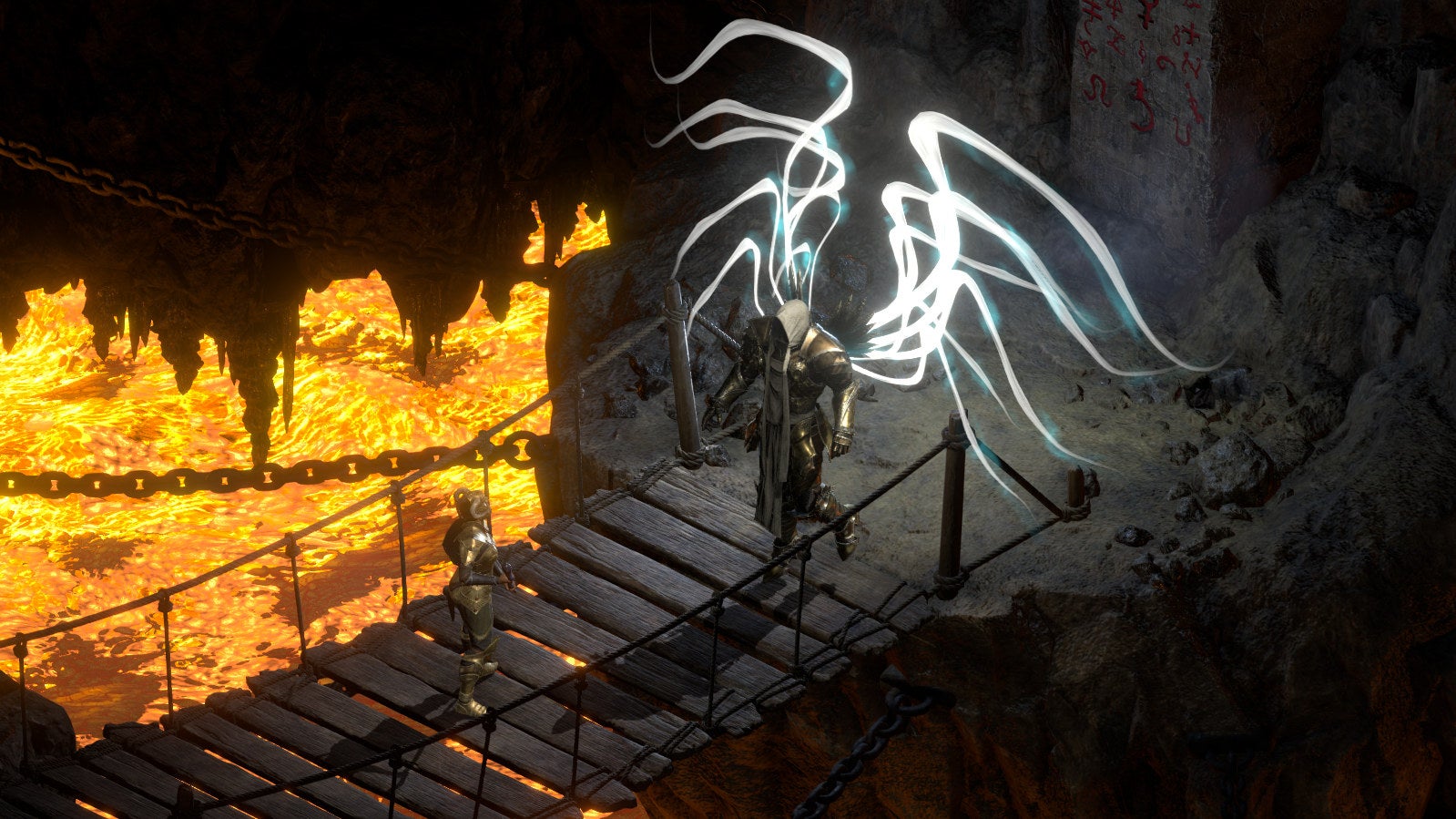“We fought that transition for a long time,” Condor founder Max Schaefer told GameSpot in a 2002 retrospective. “The amount of time we argued about it was totally ridiculous, considering it only took us about three hours to mock the game up in real time.” Blizzard, of course, got their way, creating what amounted to a new genre in the process. Some old-school RPG fans balked at the notion of a real-time dungeon crawler, but many more fans were drawn by its pinata-like loot explosions and its clever use of roguelike mechanics, which randomised the progression just enough to make the game effectively endless. Diablo and its sequel went on to sell millions of units, cementing it as one of Blizzard’s most important franchises. Its history since then is emblematic of the old tug of war that once took place between the two Blizzards. Blizzard North was shuttered in 2005, the principal developers - among them lead designer David Brevik - departing to found Flagship Studios. When Diablo 3 was finally released in 2012, it was deemed a disaster, with Brevik among its critics. Blizzard eventually managed to right the ship with a popular expansion and a successful console transition, but upper management opted to move on to Diablo IV, reportedly pulling the plug on a second expansion in the process. Still, despite this checkered history, Blizzard are more invested than ever in Diablo. There are no fewer than three Diablo games in development at this time: a mobile game originally conceived for Chinese audiences, the previously-announced sequel, and now a remaster of Diablo II, which is still its most successful entry to date. That’s three more games than poor StarCraft, which recently saw active development end on StarCraft II. Why is Diablo such a large part of Blizzard’s future? Consider these quotes from Kotaku’s 2018 report on Diablo IV, then-codenamed Fenris, published shortly after Blizzard’s disastrous Diablo: Immortals reveal: Yes, Blizzard want Diablo, the series that once inspired Destiny with its loot-based mechanics… to be their new Destiny. Time truly is a flat circle. “The question that kept getting asked is, ‘If there’s going to be a ‘strike’ equivalent, where you’re forced into a very story-focused, well-designed level of a dungeon, what does that look like in Diablo?” said one person familiar with the project. “What if we still had a core Diablo game that just happened to have a bunch of people on the map to do other cool stuff?” It’s an opportunistic move by Blizzard, but not an especially surprising one. For those who haven’t been following Blizzard’s fortunes over the past couple years, it hasn’t been the best of times for the once invincible publisher. In late 2018, Blizzard unexpectedly pivoted and started putting a premium on cutting costs. Rumors began to emerge that Blizzard were doubling down on established franchises while putting a new emphasis on mobile development. Internally, Blizzard moved away from the “we’ll ship it when it’s done” ethos that defined most of their best years, choosing instead to focus on getting as many games out as possible. Along with the three Diablo games listed above, Blizzard are also working on Overwatch 2, with additional mobile games also confirmed to be in development. While no one is really saying it out loud, speculation has centered around Activision tightening Blizzard’s leash, sending them anxiously searching for additional revenue generators. They appear to have settled on Diablo, with its persistent endgame and loyal fanbase, as an ideal candidate. “You know, when I returned to Blizzard about five years ago after taking a little time off, Diablo was one of the opportunities that we looked at in incubation, and there were so many cool things that we could do with it,” Blizzard senior vice president Allen Adham recently told me, in an interview I conducted on behalf of The Washington Post. “There’s just so much love for that franchise, both inside of Blizzard and with our player base; they were all just such obvious ideas, they just naturally fell from the heavens, so to speak.” It’s no wonder that Blizzard are going out of their way to cater to longtime fans by returning to the darker and edgier look of the original games. When development on Diablo II: Resurrected wasn’t going well, Blizzard went as far as to shift development to a whole different team while bringing in Vicarious Visions - the studio behind the very successful Tony Hawk Pro Skater 1 & 2 - as a co-developer. If there’s one franchise Blizzard don’t want to mess up, it’s Diablo. Blizzard officially announced Diablo IV in 2019, in the process confirming that it will have a shared open world component that requires it to be always online. When it launches, it will finish the process that began when Borderlands cribbed from Diablo to create the “looter shooter” genre, thus paving the way for Destiny, The Division 2, and a host of other persistent online games driven by the power of loot. The only surprise is that Blizzard are opting to retain the old isometric perspective rather than shift to a more accessible third-person point of view - a possibility that was reportedly being actively discussed as recently as a couple years ago. If there’s a positive to pull from all of this - aside from the fact that Diablo II: Resurrected actually looks really good - it’s that Blizzard don’t seem intent on dumbing down the mechanics. If anything, it’s going the other way, settling somewhere between Diablo 2 and Diablo 3 in terms of complexity. Apparently taking a cue from the extremely successful Path of Exile, Diablo IV features what looks like a large and impressive skill tree developed in part with fan feedback. It’s also introducing new stats and rethinking item rarity. Having successfully rescued Diablo III from the abyss, it seems that Blizzard’s reaction is, “deeper and more.” This is the right approach to take if Blizzard wish for Diablo IV to have any kind of staying power. After all, Blizzard North and Blizzard South were both right: Diablo’s real-time dungeon crawling brought it to the masses, but the high degree of depth and flexibility introduced by Brevik and company was what made it popular for years to come. The genre owes many of its most popular innovations to Diablo, from socketed items to color-coded loot (though Brevik will tell you that the idea was inspired in part by Angband). Even skill trees, originally a strategy game fixture, owe their status as a signature RPG element to Diablo. When World Of Warcraft was released in 2004, it made no secret of lifting much of its design from Diablo, including that color-coded loot. World Of Warcraft remains Blizzard’s most popular game, and with WoW Classic continuing to thrive there’s no reason to suppose that it will go away anytime soon. But with StarCraft on hiatus and Overwatch currently on the wane, Blizzard badly need a series that can take it forward. More than ever, Diablo appears to be that series.


